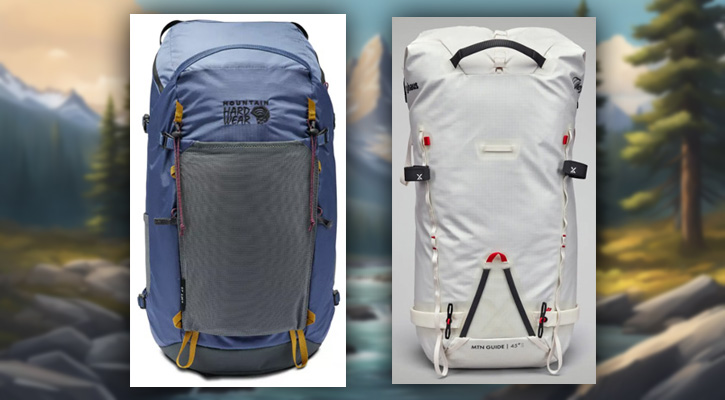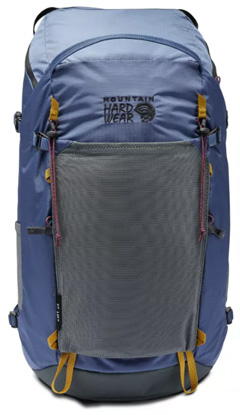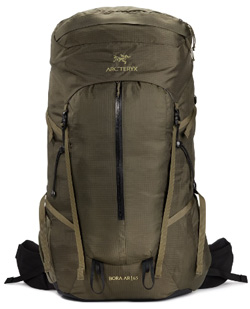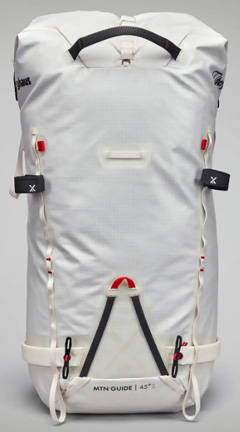
Hiking backpacks often come with a high price tag which may leave you wondering about the factors contributing to their cost. Every aspect of a backpack, from the materials used to the engineering behind it, is meticulously considered to ensure durability, functionality, and comfort for users like you.
Top-end backpacks are designed to withstand harsh conditions and are made from high-quality materials such as ripstop nylon, ultra-strong zippers, and lightweight, yet sturdy frames.
The cost reflects the research and development that goes into creating a product that is not only resistant to wear and tear but also ergonomically designed to evenly distribute weight and reduce the strain on your body over long treks.
Manufacturers also invest in advanced technologies to provide you with features that enhance your hiking experience. Features such as integrated rain covers, hydration reservoirs, and adjustable suspension systems are the result of continuous innovation in the industry.
These specialized features, along with the rigorous testing process that hiking backpacks undergo, culminate in a product that is reliable and often deemed worth the investment by those who spend a significant amount of time on the trails.
In addition to functionality, brand reputation and market positioning play roles in hiking backpack pricing. When you purchase a backpack from a well-established brand, you are also paying for customer service, warranty, and the assurance of a product that has been tried and tested by a community of hikers.
Quality often correlates with cost, so buying an expensive backpack can be seen as investing in your safety and comfort during hikes. While the initial cost may be high, the longevity and advanced features of a quality backpack can justify the expense over time.
1. Why are Hiking Backpacks Expensive?
When you invest in a hiking backpack, you’re paying for the culmination of meticulous material selection, innovative design, and extensive research that ensures performance, comfort, and durability.
Quality of Materials and Durability
Hiking backpacks are crafted from high-quality materials like durable nylon or polyester which offer superior abrasion resistance. These materials ensure that your backpack withstands the rigors of outdoor activities without succumbing to wear and tear.
By choosing a product made of robust materials, you benefit from a longer lifespan, which justifies the initial investment.
- Materials: Durable nylon, polyester
- Features: Abrasion resistance, longevity
Don’t miss: 9 Best Scandinavian Backpack Brands: Our Favorites

Mountain Hardwear Women’s JMT 25L Backpack: image mountainhardwear.com
Advanced Design and Engineering
Your comfort and support on the trail are largely due to advanced design and engineering. Backpacks boasting ergonomically shaped back panels and thoughtfully placed padding translate to more comfortable and supportive experiences on your hikes.
The features integrated into each model also offer improved functionality, such as adjustable straps or ventilation systems.
- Design and Engineering: Ergonomics, functionality
- Comfort and Support: Back panels, padding
Research and Development
The technology behind hiking backpacks is ever-evolving, and substantial investment is made in research and development to bring forth innovations that enhance your hiking performance. This process is continuous and costly because it aims to meet your specific needs through rigorous testing and refining of product designs.
- Research and Development: Innovation, testing
- Performance: Tailored design, technology upgrades
Read also: 8 German Backpack Brands that You’ll Love

Arc’teryx Bora 65 Men’s Backpack: image arcteryx.com
2. Impact of Specialized Features
Specialized features in hiking backpacks have a significant impact on their cost. These features are meticulously designed to improve your hiking experience by enhancing comfort, durability, and the efficient use of space.
Comfort and Support Mechanisms
Your comfort on the trail largely depends on how your backpack manages weight. Manufacturers incorporate advanced padding on shoulder straps and a padded back panel to distribute the load evenly.
They also employ support mechanisms such as internal frames and adjustable hip belts that work together to stabilize and transfer weight away from your shoulders, reducing fatigue.
Enhanced Weather Resistance
When faced with wet weather, having waterproof or highly water-resistant materials can protect your gear from water damage. Backpacks often feature specialized coatings or materials such as ripstop nylon that offer robust resistance to the elements. These weatherproofing techniques keep your essentials dry in demanding conditions.
Additional Storage and Organization
Ample storage options in your backpack allow for organization and easy access to your gear. Look for designs with multiple compartments, which maximize storage capacity without sacrificing space.
Innovative features like integrated hydration sleeves, expandable pockets, and tool attachment points ensure that you have a designated spot for all your necessities, keeping them secure and within close reach.
Read next: 9 European Backpack Brands for Hiking and Outdoor Activities

Berghaus Unisex MTN Guide 45 Backpack: image berghaus.com
3. Brand Perception and Reputation
When you invest in a hiking backpack, you’re not just buying a product but you’re buying into the brand’s perception and reputation, which are built on performance, longevity, and customer service.
Premium Brands and Market Position
Osprey, The North Face, and Arc’teryx are examples of premium brands that command higher prices due to their market position. They’re synonymous with quality materials and durability, aspects that are essential for performance on the trail. Their backpacks often incorporate advanced technologies for comfort and durability, justifying the cost.
These brands maintain their status by:
- Innovating high-performance features regularly.
- Utilizing quality materials that contribute to the longevity of products.
- Crafting backpacks that are designed to withstand diverse and rigorous outdoor conditions.
Customer Service and Warranties
A reputable brand offers more than just a physical product. Brands like Osprey, The North Face, and Deuter provide exemplary customer service and generous warranties that reflect confidence in their backpacks’ quality and durability.
For example:
- Lifetime warranties or similarly extensive policies are common among these brands.
- They often offer repair services to extend the backpack’s life even further.
The warranty offered by a brand reassures you that your investment is protected and emphasizes the company’s commitment to quality and customer satisfaction.
Read next: 8 Italian Backpack Brands for Outdoor, Travel, and Casual Wear
